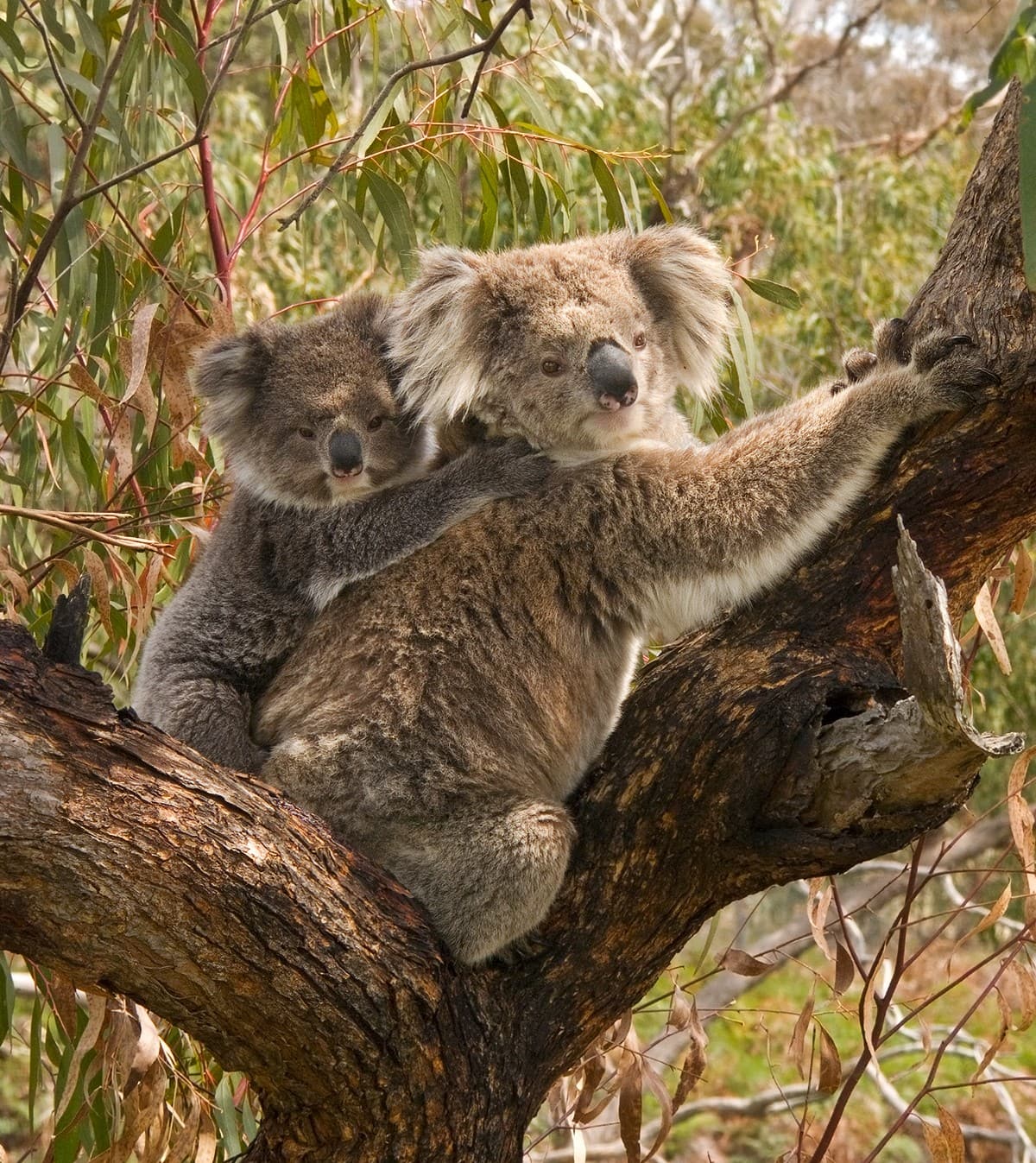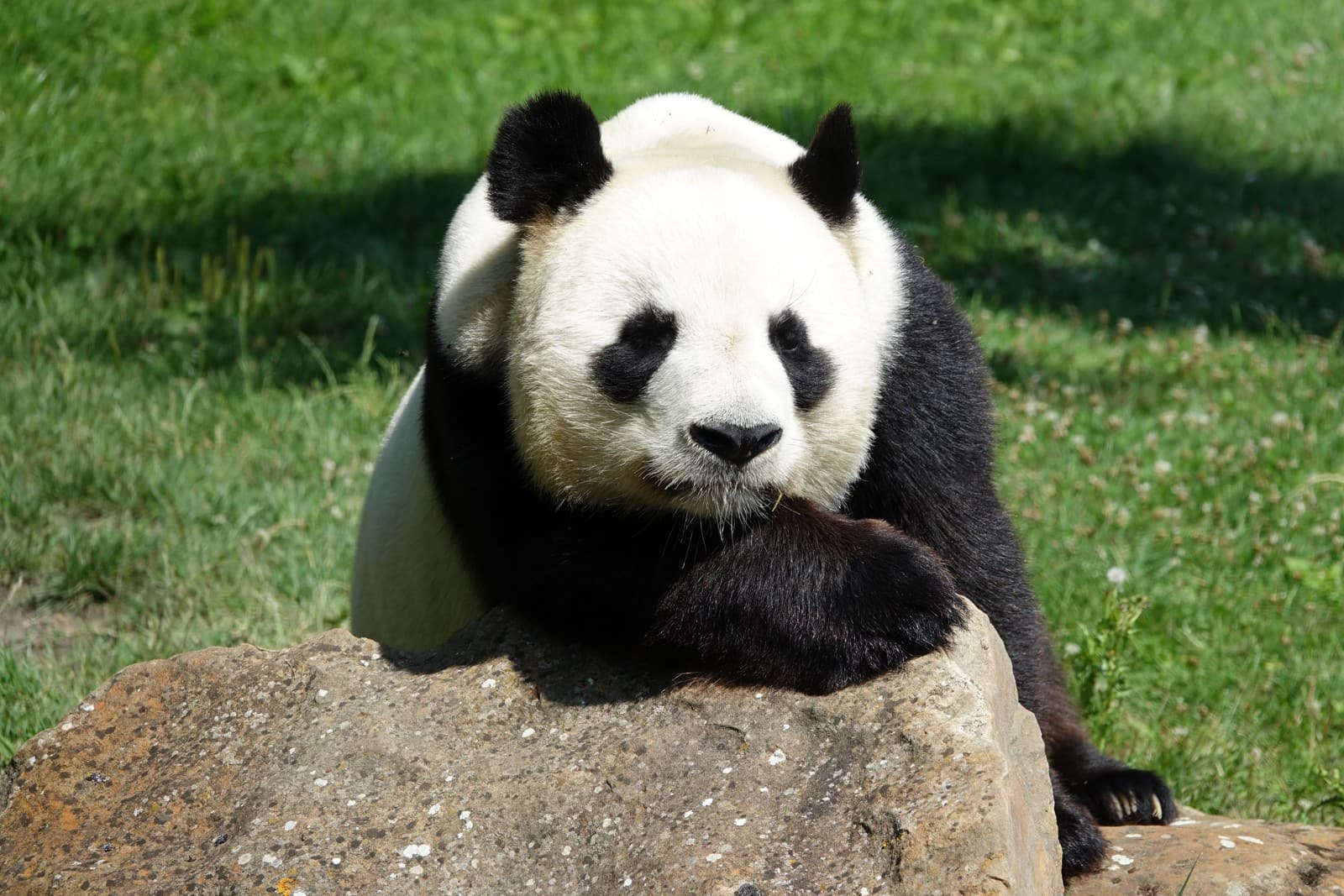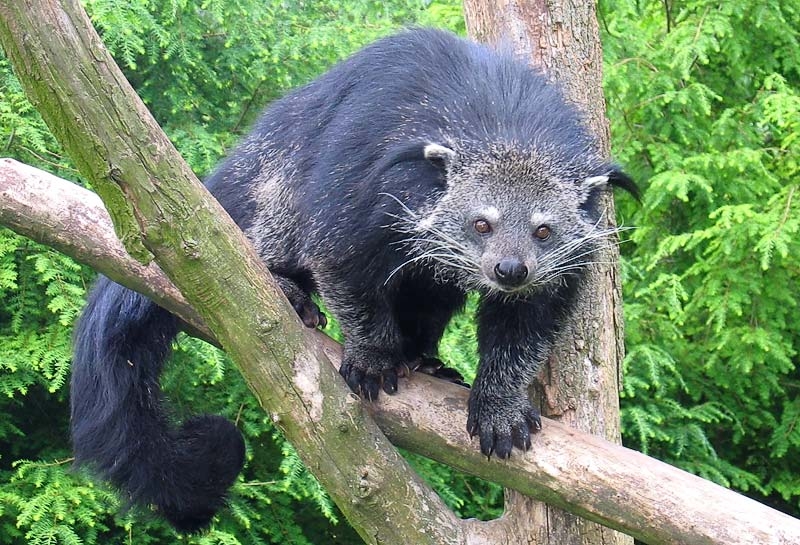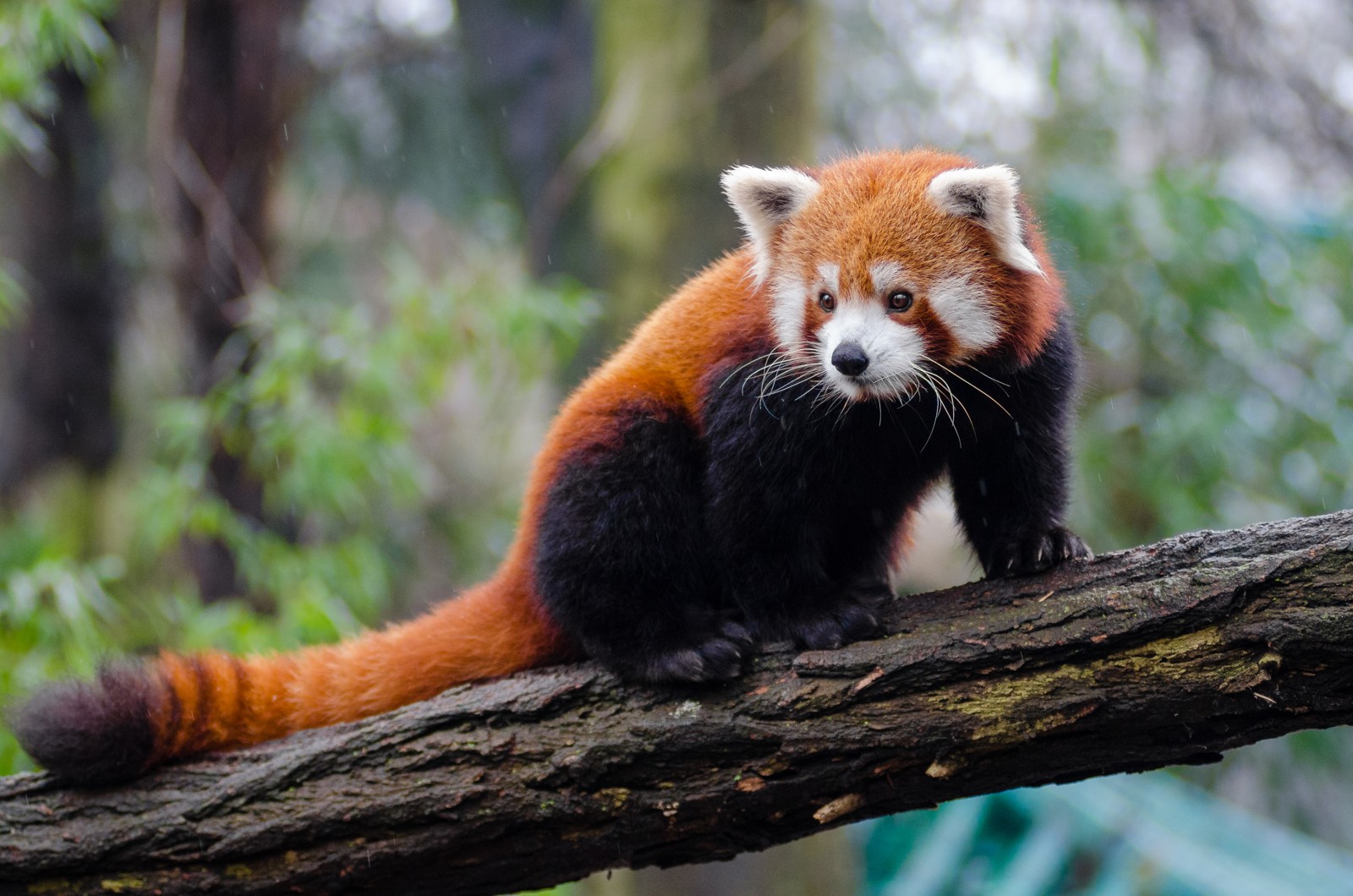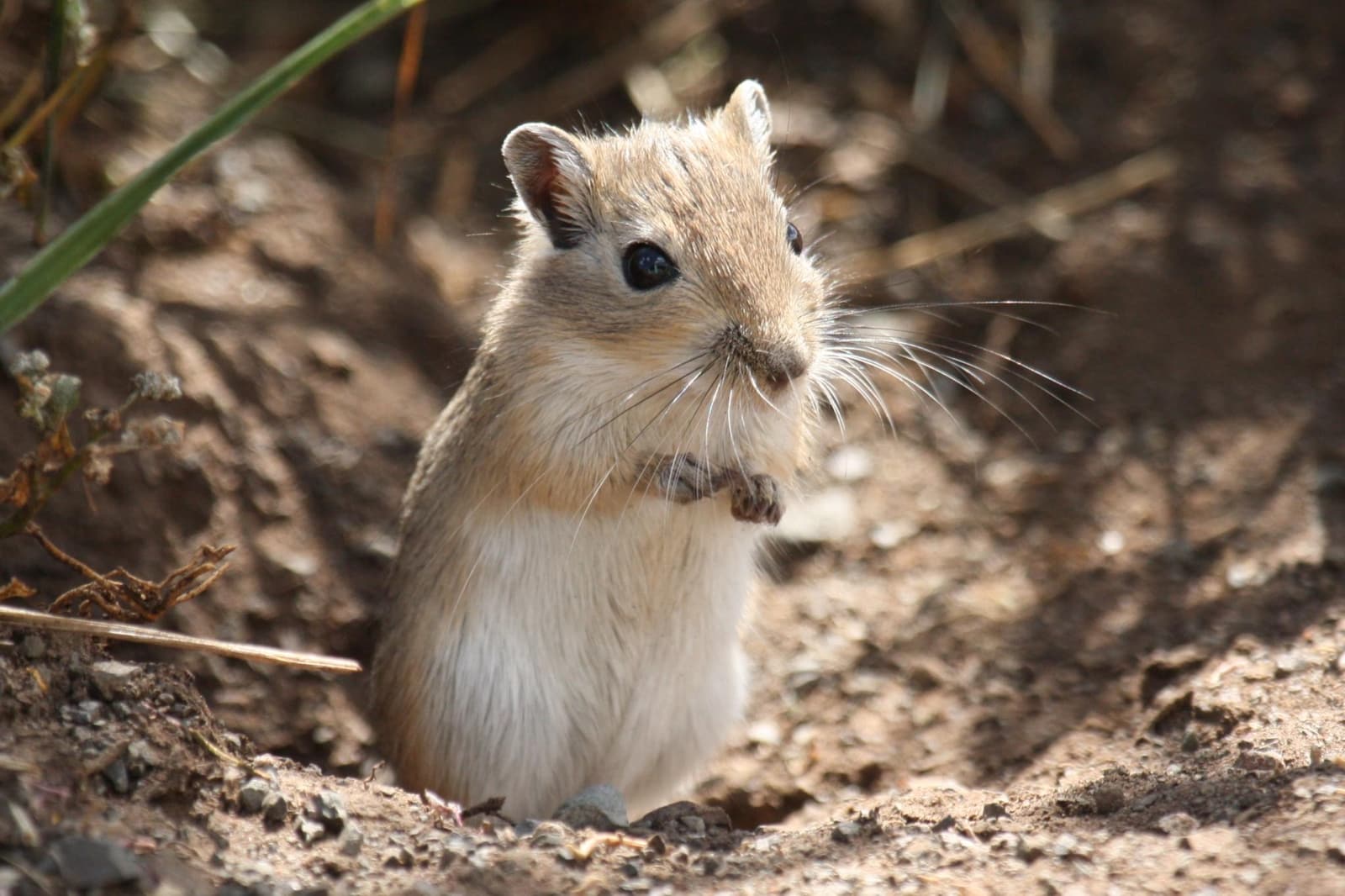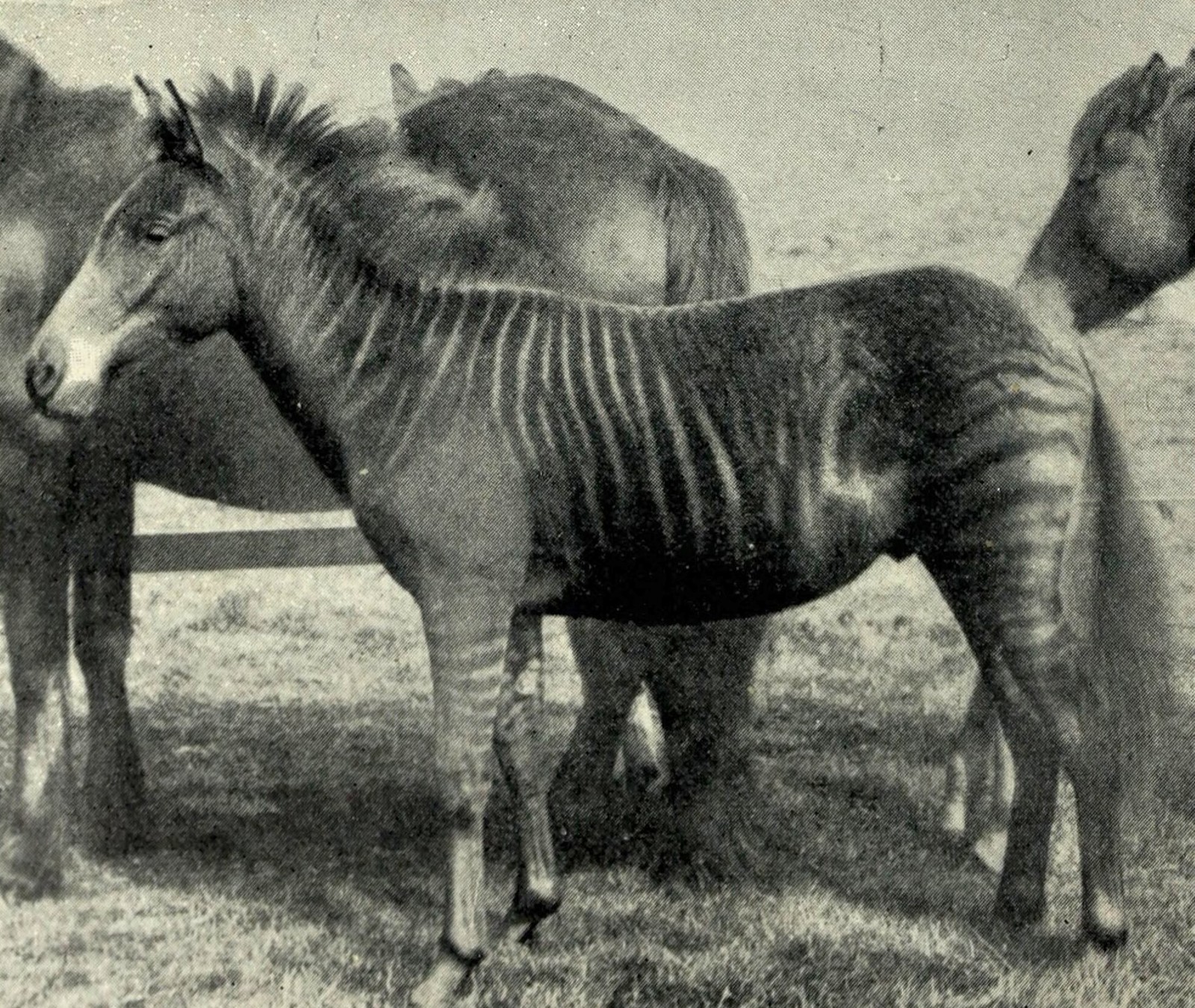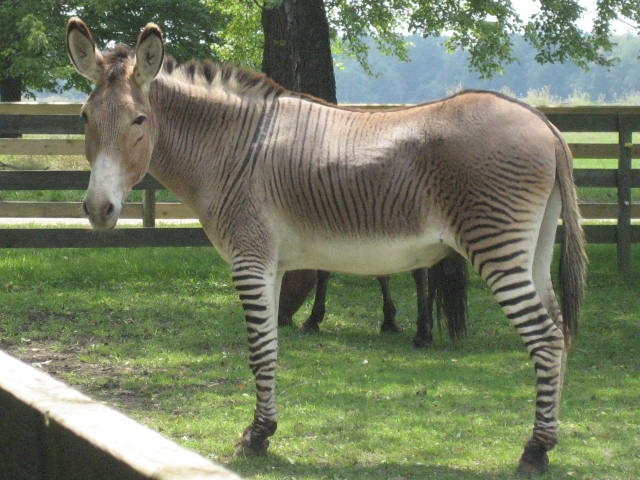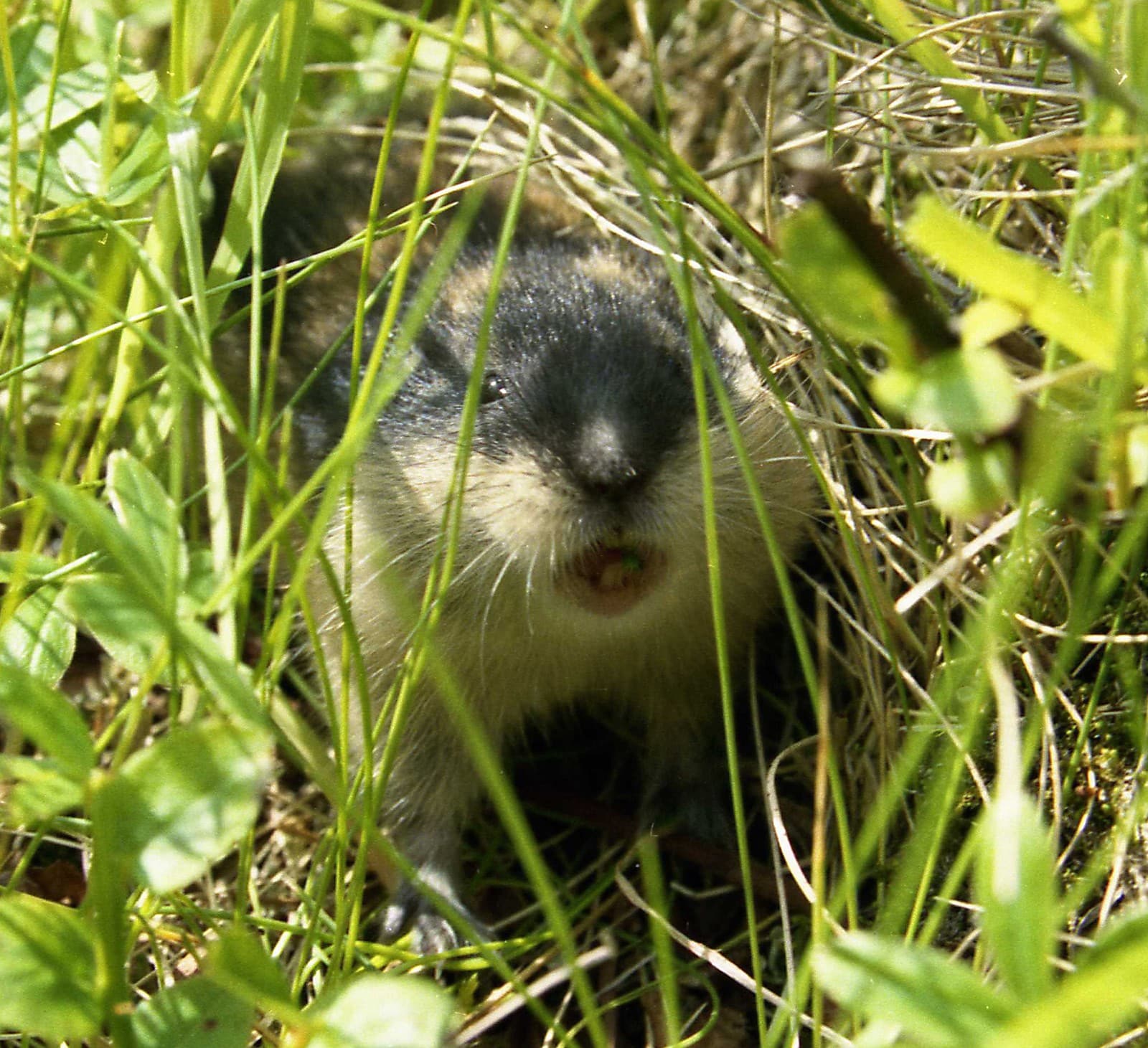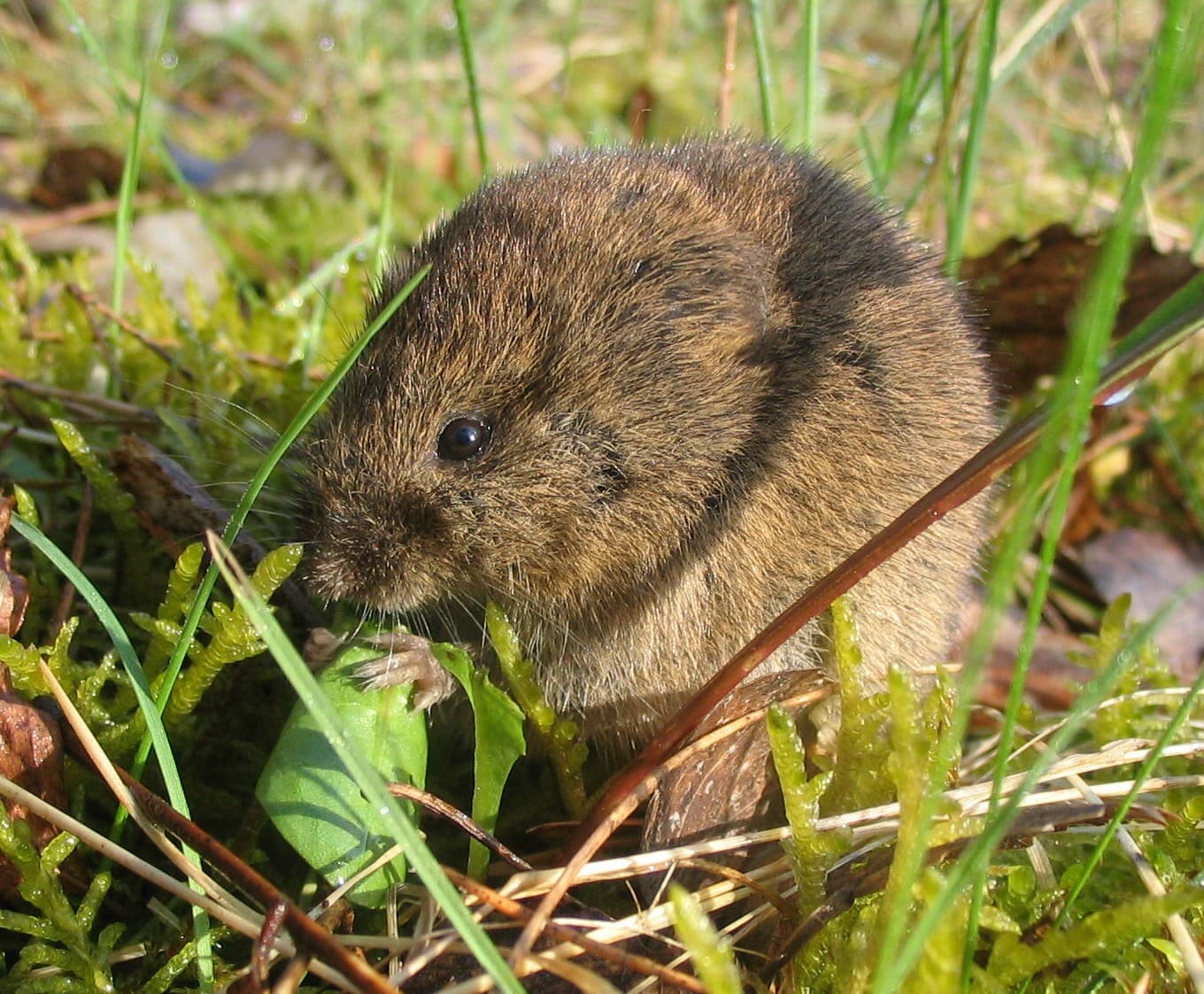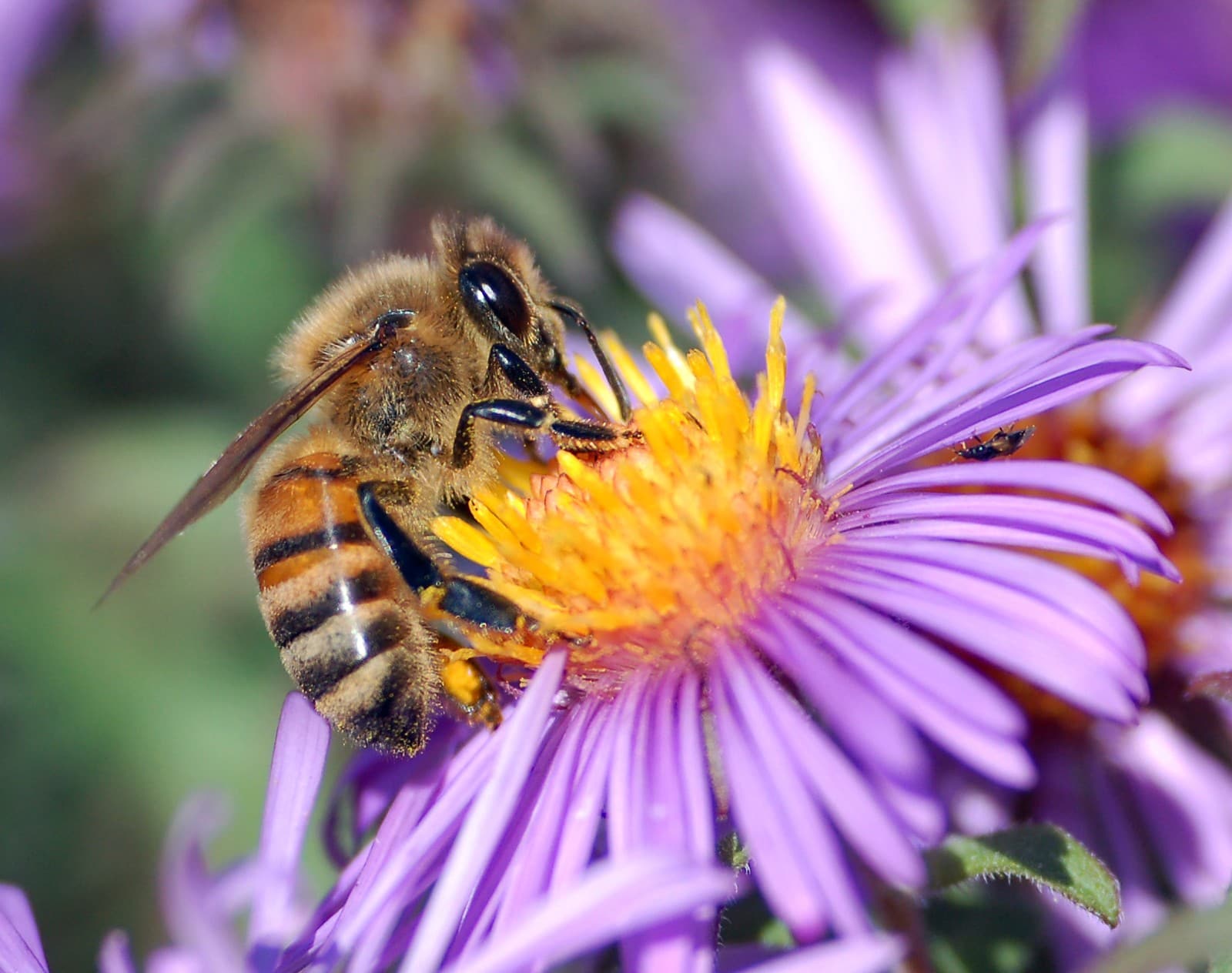Panda vs Red Panda: A Complete Comparison
Despite sharing a name, Giant Pandas and Red Pandas are remarkably different creatures with distinct evolutionary paths. While the Giant Panda is a true bear weighing up to 330 pounds (150 kg), the Red Panda is a unique species closer to raccoons and weasels, typically weighing just 14 pounds (6.5 kg). This comprehensive comparison reveals how these bamboo specialists evolved separately yet developed similar adaptations.
The most striking difference in the Panda vs Red Panda comparison lies in their size and appearance. Giant Pandas are massive black and white bears that dominate their habitat, while Red Pandas are cat-sized mammals with rust-colored fur that spend most of their time in trees. Both species share a specialized diet centered around bamboo, but their approaches to survival in their mountain habitats couldn’t be more different.
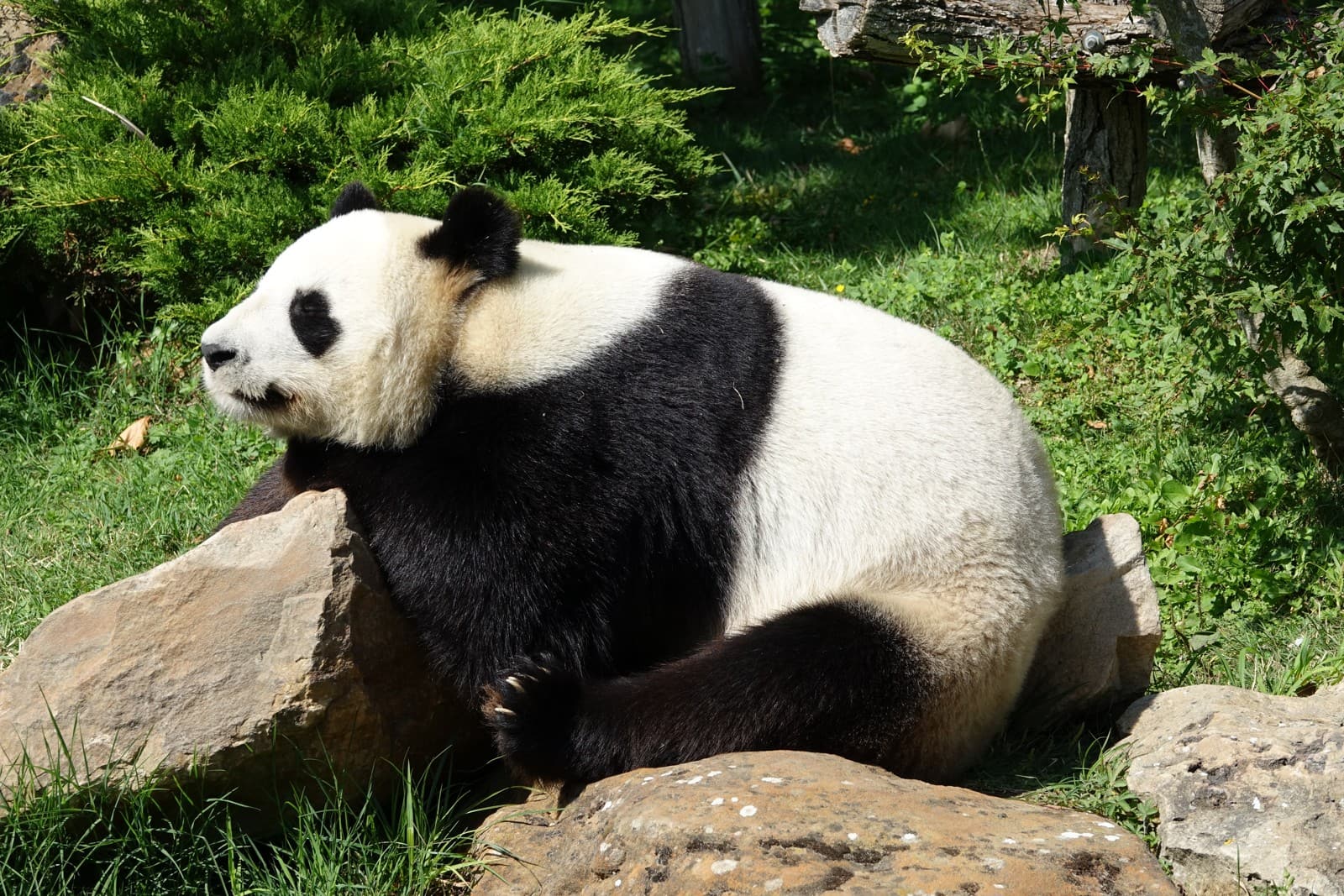
© Gzen92 / CC BY-SA 4.0
The Giant Panda exemplifies specialized evolution, with its distinctive black and white coloration serving as camouflage in its snowy mountain habitat. Their powerful jaws and specialized “thumb” (actually a modified wrist bone) allow them to process up to 40 pounds (18 kg) of bamboo daily.
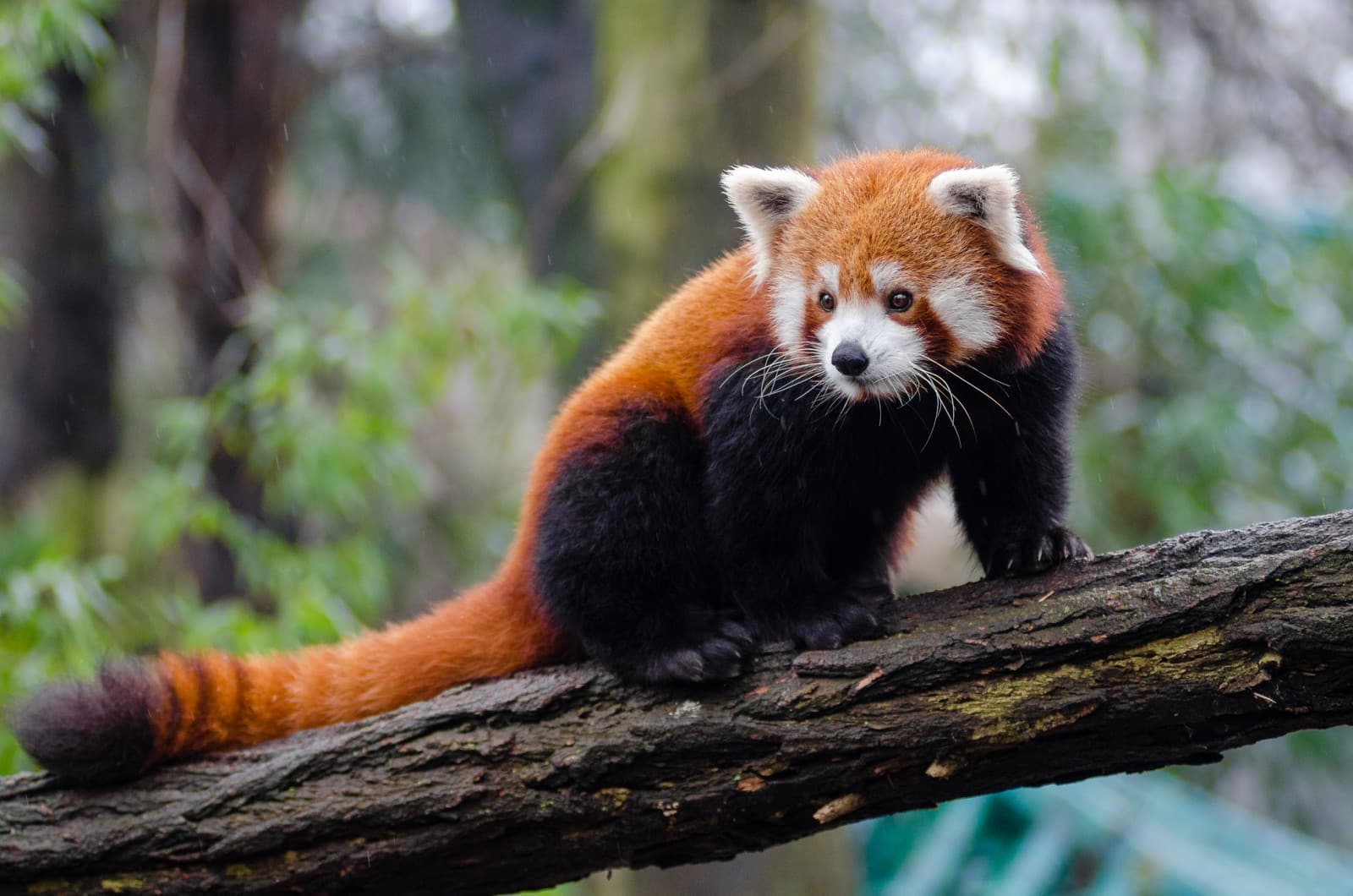
© Mathias Appel / CC0
The Red Panda showcases remarkable arboreal adaptations, with its rust-colored fur providing perfect camouflage among the lichen-covered trees of its mountain forest habitat. Their retractable claws and long tail help them navigate the canopy with incredible agility.
Key Differences: Panda vs Red Panda
| Feature | Giant Panda | Red Panda |
|---|---|---|
| Size | 4-6 feet tall (120-180 cm) | 20-25 inches long (50-64 cm) |
| Weight | 220-330 lbs (100-150 kg) | 6.6-14 lbs (3-6.5 kg) |
| Classification | True bear (Ursidae) | Unique family (Ailuridae) |
| Habitat | Ground-dwelling | Tree-dwelling |
| Daily Bamboo Intake | 20-40 lbs (9-18 kg) | 2-4 lbs (1-2 kg) |
| Lifespan | 20-30 years | 8-15 years |
Habitat and Distribution
Giant Pandas are endemic to the mountainous regions of central China, primarily in Sichuan Province, where they inhabit temperate broadleaf and mixed forests at elevations between 4,000 and 11,500 feet (1,200-3,500 meters). Red Pandas range across a wider territory, including Nepal, India, Bhutan, Myanmar, and southern China, preferring temperate forests with dense bamboo understory at elevations of 5,000 to 15,000 feet (1,500-4,800 meters).
Behavior and Social Structure
Giant Pandas are primarily solitary animals, only coming together briefly during mating season. They spend 10-16 hours per day feeding and can consume 20-40 pounds (9-18 kg) of bamboo daily. Red Pandas are also generally solitary but can be more social during mating season. They are most active at dawn and dusk, spending much of their time in trees and consuming about 2-4 pounds (1-2 kg) of bamboo daily.
Conservation Status and Threats
Both species face significant conservation challenges:
-
Giant Pandas: Vulnerable (IUCN Red List)
- Population: Approximately 1,864 in the wild
- Main threats: Habitat fragmentation and climate change
-
Red Pandas: Endangered (IUCN Red List)
- Population: Less than 10,000 mature individuals
- Main threats: Habitat loss, poaching, and human encroachment
Who Would Win in a Confrontation?
While such encounters would never occur naturally due to different habitats and behaviors, a Giant Panda would have a significant advantage in any theoretical confrontation due to its:
- Massive size advantage (15-20 times heavier)
- Powerful bite force (292 pounds of force)
- Bear strength and musculature
- Thick protective fur and robust skeleton
However, Red Pandas would likely avoid any confrontation through their superior agility and climbing abilities. Both species are generally non-aggressive unless threatened and prefer to avoid conflict.
Diet and Feeding Adaptations
Both species have evolved specialized features for their bamboo-based diets:
Giant Pandas:
- Modified wrist bone forming a “thumb”
- Powerful jaw muscles
- Specialized flat molars
- Enhanced digestive system for processing fibrous plant material
Red Pandas:
- Sharp, curved claws for gripping bamboo
- Specialized thumb-like wrist bone
- Strong grinding teeth
- Unique digestive adaptations for processing bamboo
Through millions of years of evolution, these remarkable animals have developed fascinating solutions to similar dietary challenges, despite their distinct evolutionary paths and size differences.
